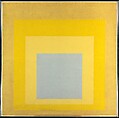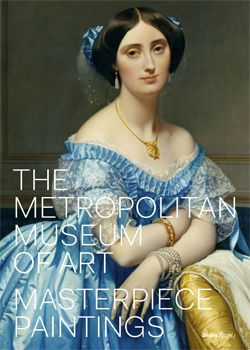Homage to the Square: With Rays
Josef Albers American, born Germany
Not on view
In 1920, the young artist Josef Albers enrolled at the Bauhaus, the recently founded school of art, architecture, and design in Weimar, Germany. With its strong utilitarian emphasis, the Bauhaus placed equal importance on technical and artistic skills. The basis of its education was the "preliminary course," a curriculum designed to prepare the students for further study in the school's various workshops; the course's central concept was the "contrasting effects" of form, texture, and—most importantly for Albers—color.
After completing his course of study, Albers was appointed as a teacher at the Bauhaus in 1925, and he remained there until the school closed in 1933 under pressure from the Nazi party. He emigrated to the United States with his wife Anni and taught first at Black Mountain College in North Carolina, then at Yale University in New Haven, Connecticut. In this way, Albers disseminated his Bauhaus education and his own artistic philosophy to a new generation of artists in America. He also published the influential treatise Interaction of Color (1963), a study of color theory that was used widely in art instruction.
Around the time that he joined the Yale faculty in 1950, Albers began his celebrated Homage to the Square series. This would become a body of more than a thousand works executed over a period of twenty-five years, including paintings, drawings, prints, and tapestries. The entire series was based on a mathematically determined format of several squares, which appear to be overlapping or nested within one another. This geometric abstraction was Albers' template for exploring the subjective experience of color—the effects that adjacent colors have on one another, for example, and the illusion of flat planes of color advancing or receding in space.
With Rays is one painting from the Homage to the Square series (see also Homage to the Square: Soft Spoken, MMA 1972.40.7). Its color composition is comprised of an inner square of dull gray and three surrounding squares in varying tones of yellow. The gray square, the palest of the four, seems to float against its more vivid background; this arrangement also encourages the viewer's eye to move outward from the center of the composition. That optical progression, in addition to the sunlike, golden tones of the three outer squares, may have inspired the title of this work.
This image cannot be enlarged, viewed at full screen, or downloaded.




